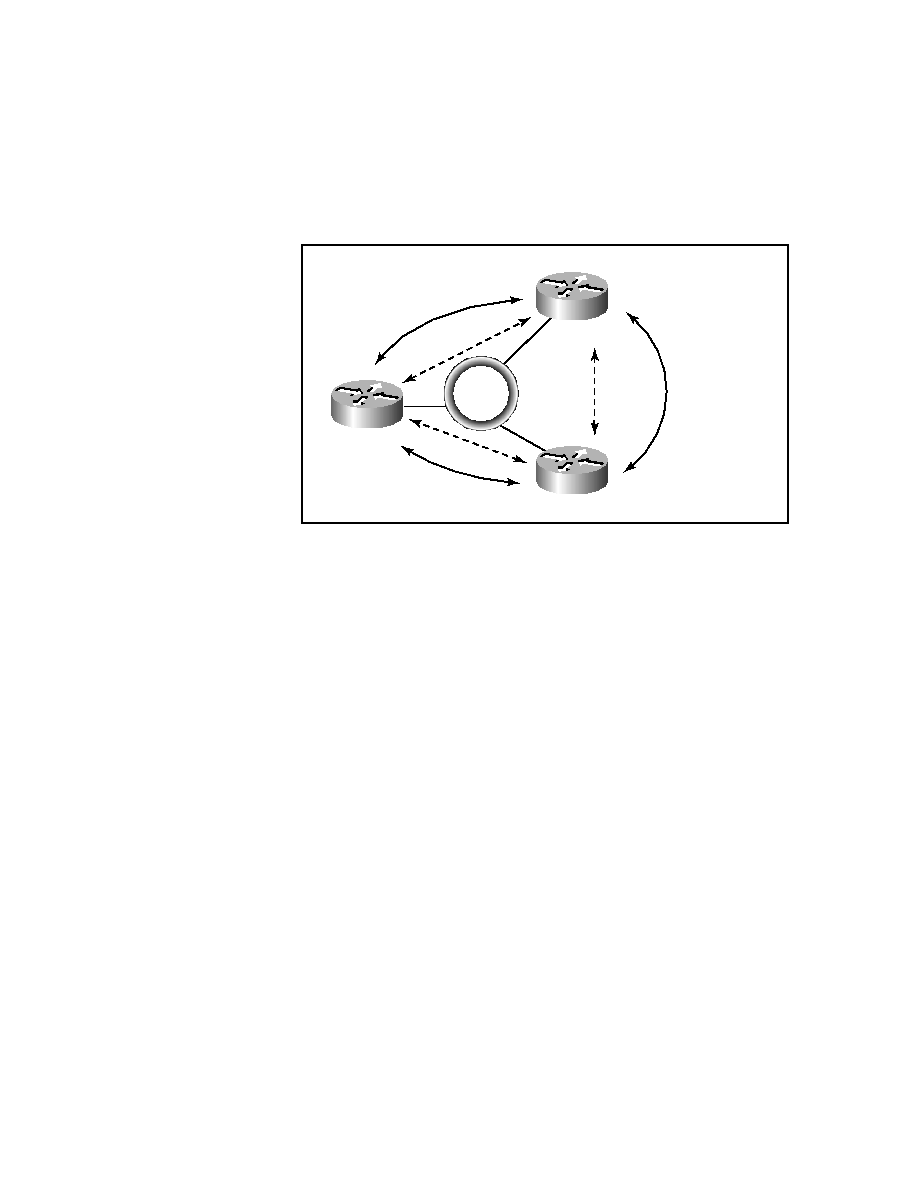
autonomous systems. When only one link connects two autonomous sys-
tems, the IP address of the connected interface is used to establish the BGP
session. It is also possible to use other IP addresses, but the address must be
reachable without using an IGP. This is accomplished by using static routes
or additional BGP commands when configuring eBGP. If multiple links are
used to connect to the other AS, using loopback addresses is the best option.
propagated via BGP:
table.
nected networks. BGP has a synchronization option that requires BGP and
the IGP routes to synchronize before BGP will advertise IGP learned net-
works. The no synchronization command indicates that BGP and the IGP
do not have to synchronize before BGP advertises the routes.
Router C networks sent to Router A
Router B networks sent to Router A
to Router C
Router C networks sent
to Router B